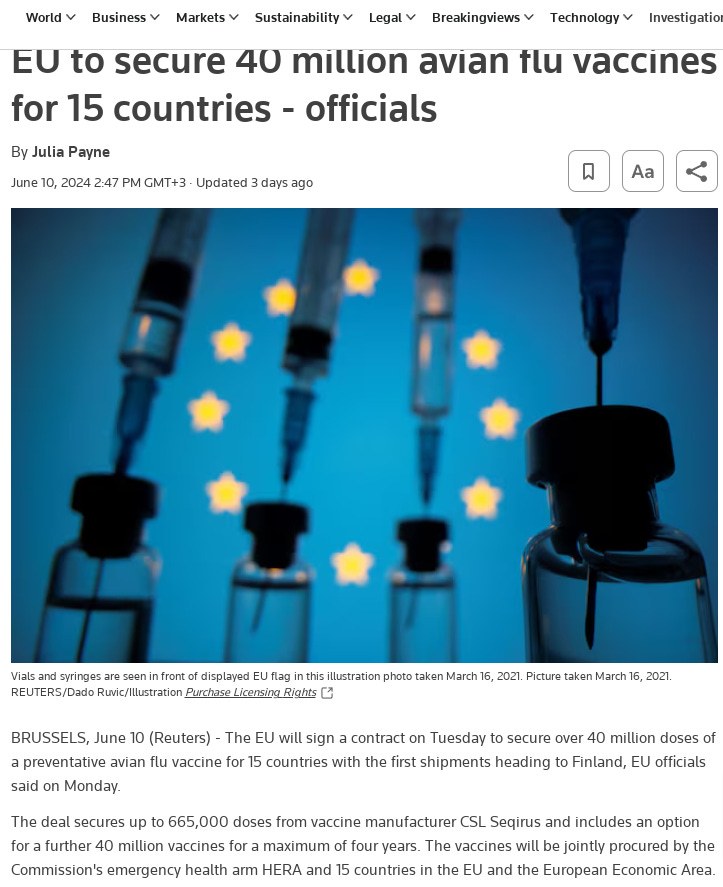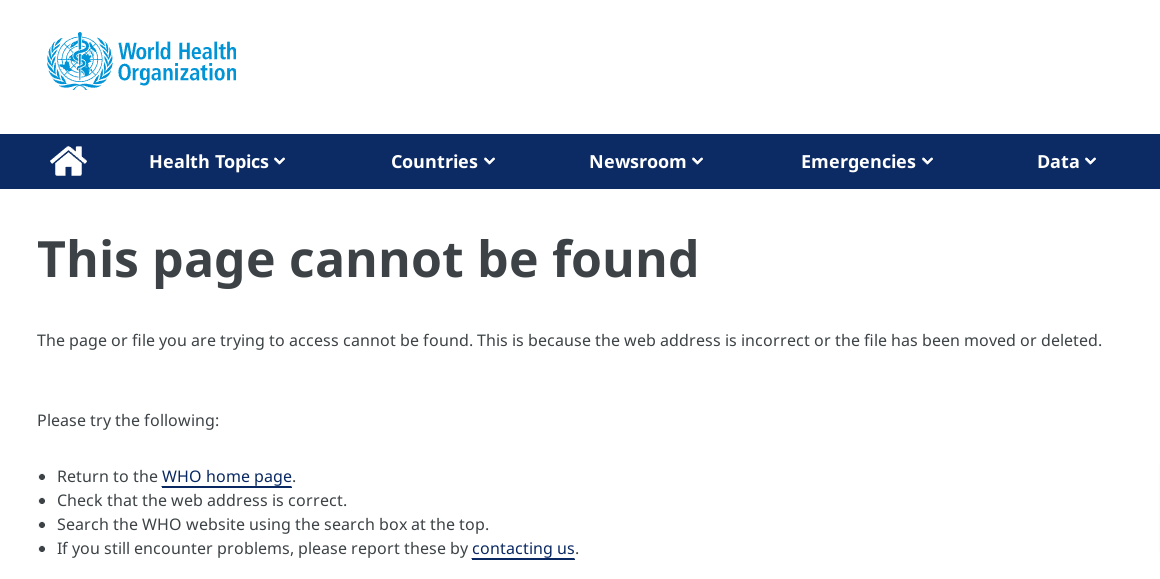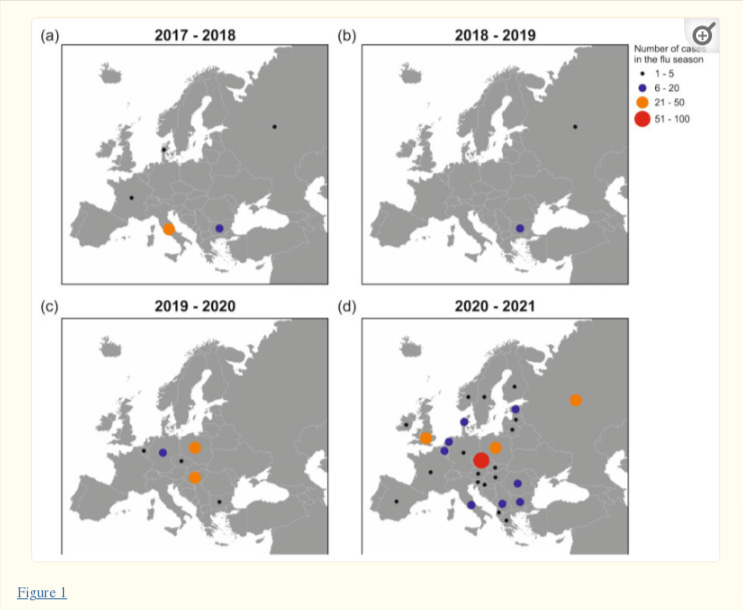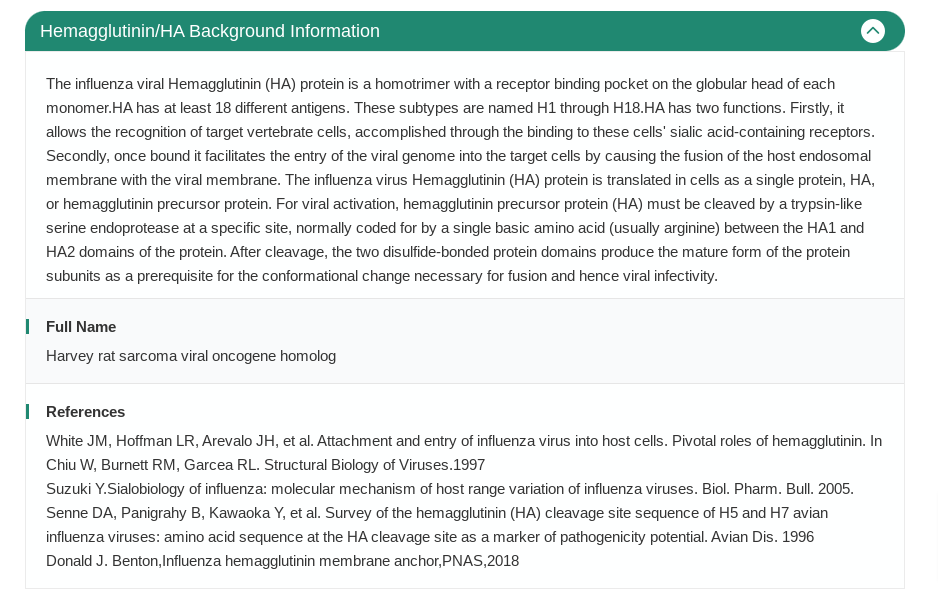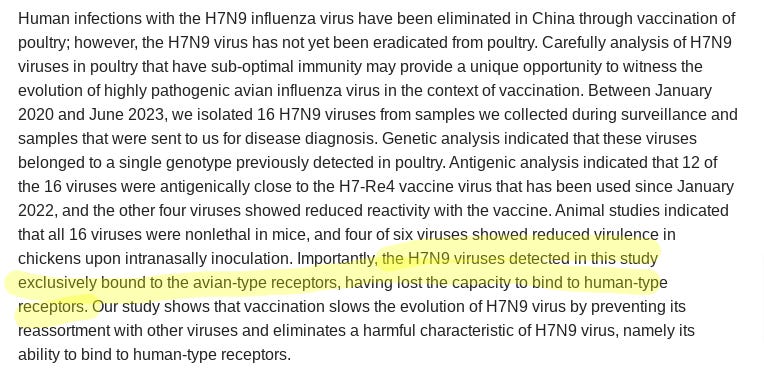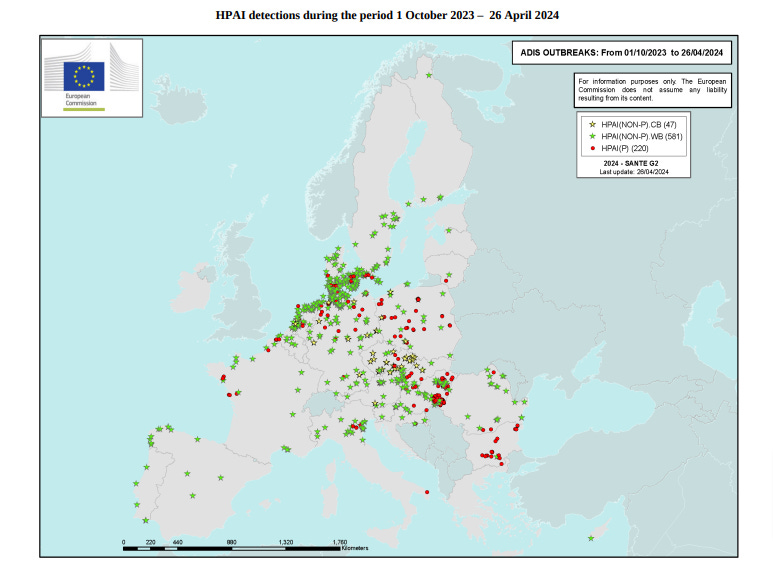Here, in light of EU acquiring millions of Vaccine doses (for the H5N8 strain), I will just be highlighting the view mostly from an European perspective.
Looking at the current H5N1 situation in the world, there does not seem to be any elevated danger of a spillover.
ECDC assessment This is the first laboratory-confirmed human infection with avian influenza A(H5N2). Sporadic human cases of avian influenza A(H5Nx) have previously been reported globally.
Transmission to humans remains a rare event and no sustained transmission between humans has been observed so far. However, sporadic zoonotic transmission cannot be excluded. The implementation of personal protective measures for people directly exposed to poultry and birds potentially infected with avian influenza viruses will reduce the associated risk.
The risk of zoonotic influenza transmission to the general public in EU/EEA countries is considered to be low.
Let’s take a quick look at what we do know about the vaccine:
Zoonotic influenza vaccine Seqirus contains a flu strain called A/Astrakhan/3212/2020 (H5N8)-like strain (CBER-RG8A) (clade 2.3.4.4b) and is based on parts of influenza virus that has been inactivated so that it does not cause any disease.
So far, so good, at least no mRNA tech here.
There are, of course, some caveeats, go read about them here.
I couldn’t find ANY mentions of H5N8 at the WHO’s candidate vaccine viruses page.
What I did manage to find is this one, mentioning H5N8 subtype emerging in 2010 in China, reemerging in ducks in South Korea in 2014, followed by outbreaks by closely related strains in Netherlands, Germany, United Kingdom, and Italy.
Then, in December 2020 we have an outbreak in Russia, of all things, and the clade 2.3.4.4b A(H5N8) was isolated.
Yes, that is the clade which is being used in the vaccine.
By 11 December 2020, 101,000 poultry had died on the farm, and the remaining poultry was slaughtered. Fifty-six farm workers had contact with dead birds or were present at the site since the start of the outbreak.
Medical follow-up was established for 150 persons (workers + family members), and prophylaxis with antiviral drugs was initiated for all 150. According to the district hospital, all of them remained asymptomatic during the 21-day follow-up period.
2021 - The wide spread of the HPAI A(H5N8) virus of clade 2.3.4.4 has been observed in Asia, Russia, Europe and North America.
The H5N6 clade is being considered a vaccine candidate
https://www.who.int/influenza/vaccines/virus/202103_zoonotic_vaccinevirusupdate.pdf?ua=1
but funnily the link now leads to nowhere.
We have an Evolutionary and Mutational Characterization of the First H5N8 Subtype Influenza A Virus in Humans from June 2022,
recent outbreaks looking like this
Even this study states
2.5. Probable Human Adaptive Mutations Are Identified in Astrakhan H5N8 Viruses in 2020
“All viruses possessed a furin cleavage site (REKRRKR↓GLF) in the HA protein, showing a high pathogenicity phenotype in chickens.
Human-to-human transmission appears to be limited, since the virus had QRG but not LRS residues at the receptor-binding site.”
and
”HPAI H5N8 viruses led to 10.9% mortality in farm chickens. However, they caused asymptomatic infection in humans, suggesting that the virus has not yet adapted to humans [11]. Human-to-human transmission is impractical, since all of their relatives had negative results for the flu tests.”
and
”..all the people who tested H5N8 positive were self-recovered without medication.”
Why TF then, is EU acquiring 40 millions doses of a vaccine against the H5N8 strain, clade 2.3.4.4b?
Like I am no microbiologist, but I think the full name here on the product page might be an error:
SITUATION IN CHINA / Pacific
H5N1 - Source WHO
From 1 January 2003 to 3 May 2024, a total of 254 cases of human infection with avian influenza A(H5N1) virus have been reported from four countries within the Western Pacific Region (Table 1). Of these cases, 141 were fatal, resulting in a case fatality rate (CFR) of 56%. The last case in the Western Pacific Region was reported from China, with an onset date of 26 March 2024.
These numbers are VERY low and most of the infections happened between 2003-2014.
EDIT: WHO LINK UPDATE
https://iris.who.int/bitstream/handle/10665/375483/AI-20240105.pdf?sequence=1&isAllowed=y
H5N7
https://pubmed.ncbi.nlm.nih.gov/38629574/
No danger here either.
SITUATION IN EUROPE
On 17.4.2024 European Food Safety Authority and ECDC released a report, saying
Between 2 December 2023 and 15 March 2024, highly pathogenic avian influenza (HPAI)A(H5) outbreaks were reported in domestic (227) and wild (414) birds across 26 countries in Europe. Compared to previous years, although still widespread, the overall number of HPAI virus detections in birds was significantly lower…
Report concludes:
Subtype A(H5N1) continues to affect naïve wild bird population in the sub-Antarctic and Antarctic regions, in the current reporting period for the first time in wild birds on mainland Antarctica. There is concern for the virus spreading from Antarctica to Australia and New Zealand in the future.
Subtype A(H5N5), genotype EA-2021-I, which has persistently been detected in Norway since the 2021–2022 epidemiological year, has since September 2023 spread to Iceland, the United Kingdom, Greenland and Germany, and – besides infecting wild birds – infected red foxes in Norway. A(H5N5) was also detected in Faroe Islands and Japan during the current epidemiological year.
Since October 2023, there has been an increase in the number of circulating genotypes originating from multiple reassortment events, likely due to the increased prevalence of HPAI virus circulation in wild Anseriformes.
Most of these genotypes had never been detected in Europe before. It is not possible to assess whether these new genotypes originated from Europe or if they represent new introductions of the virus, given the limited data available from other countries outside Europe.
The identified A(H5Nx) virus genotypes circulating in northern Europe mostly differ from those circulating in eastern and southern Europe, where a lower genetic diversity is observed. This geographical difference in circulating virus genotypes might be partly due to different wild bird populations arriving following separate migratory routes. Assuming that these genotypes originated in Europe, the higher genetic diversity observed in Northern Europe might be associated with the higher prevalence of LPAI virus in wild birds in this region than in southern Europe (Pérez-Ramírez et al., 2010). This higher LPAI virus prevalence may increase the probability of reassortment events with A(H5Nx) viruses.•
In the 2023–2024 epidemiological year, the detection of seven A(H5) viruses in wildand domestic birds containing markers of mammalian adaptation in the PB2 protein(E627K or D701N) indicates that viruses with an enhanced capacity to infect mammals can replicate and spread in birds. This is of concern for host jumps and reassortments with influenza A viruses circulating in mammals.
The A(H5N1) viruses currently circulating in Europe retain a preferential binding foravian-like receptors; however, several mutations associated with increased zoonotic potential have been detected. Their effects on the biological characteristics of the viruses need to be further investigated.
HUMANS: Despite the widespread occurrence of A(H5N1) in wild birds, poultry and somemammals, with many possible human exposures since 2020, there have been no symptomatic human cases detected in the EU/EEA.
Report mentions the standard “options for response” for humans like not touching dead birds and staying at home when ill.
For people with occupational exposure, “vaccination against A(H5) virus can be considered for protection of those at higher risk of exposure to A(H5N1) as a component of a wider, comprehensive approach to prevent human infections. Specific vaccination recommendations are under the remit of national authorities.”
So just you know:



